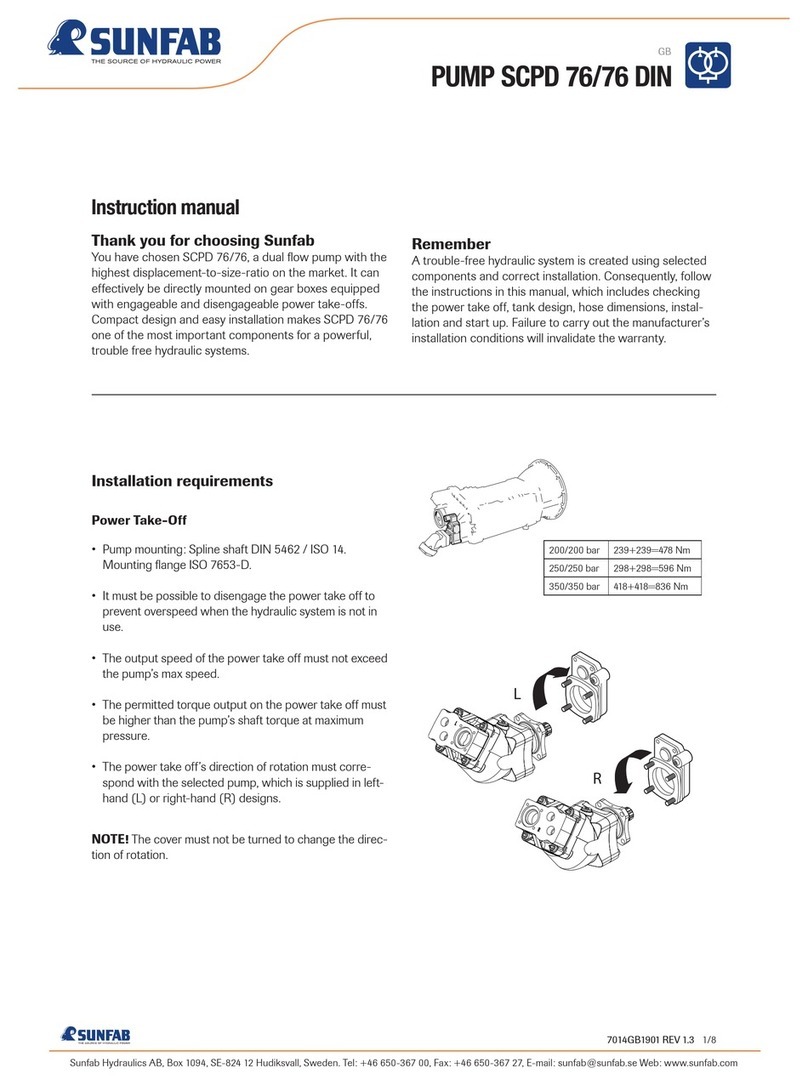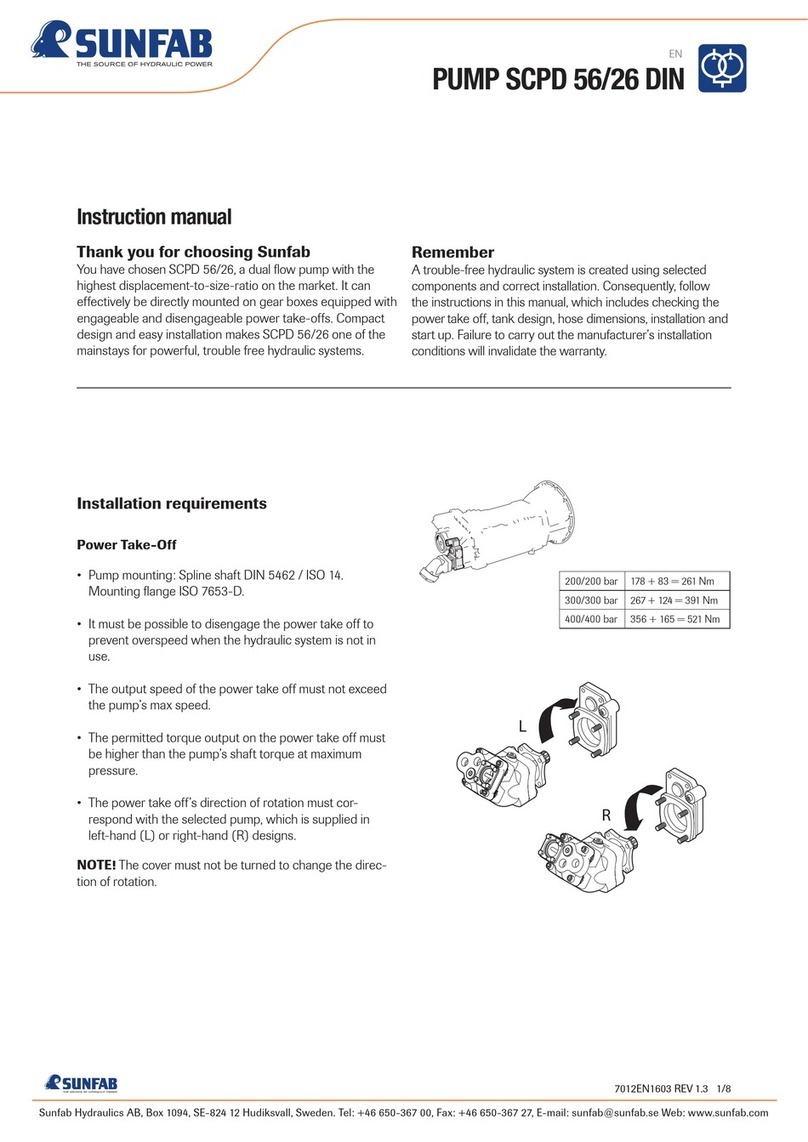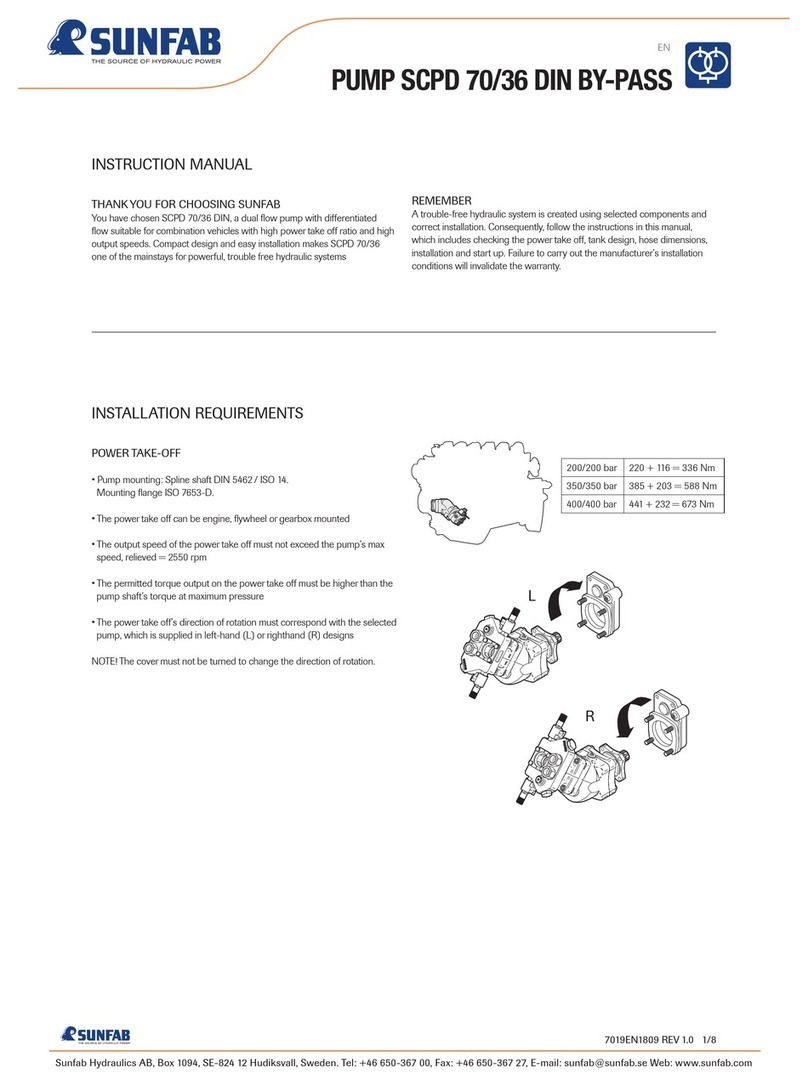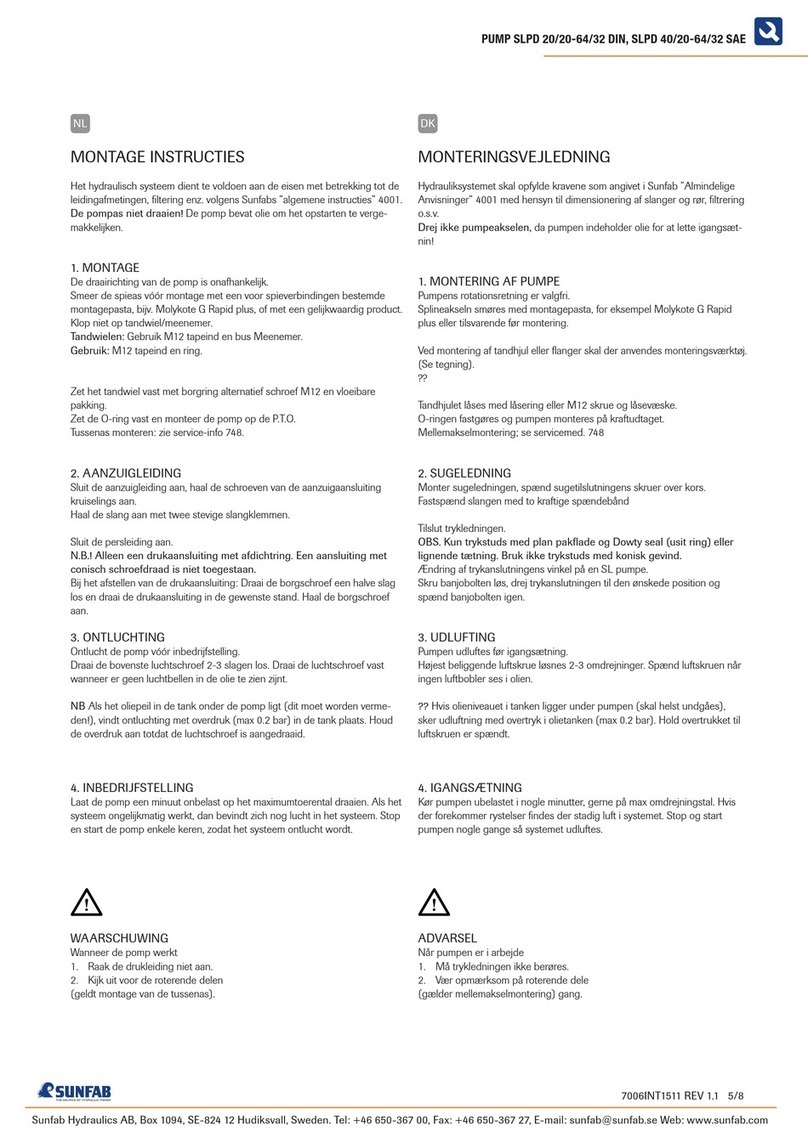
Sunfab Hydraulics AB, Box 1094, SE-824 12 Hudiksvall, Sweden. Tel: +46 650-367 00, Fax: +46 650-367 27, E-mail: sunfab@sunfab.se Web: www.sunfab.com
1407 6/8
PUMP SCPD 76/76 DIN
TROUBLESHOOTING
Measures with malfunctioning hydraulic system
Fault Troubleshooting Cause Action
The equipment works jerkily Check whether the flow in pressure
hose from the pump pulsates. Oil
spots on the pump and suction
hose can indicate an air leakage
Check the oil level in tank
Check whether the oil foams
1. Pump not vented after installation
2. Air leakage on the suction hose
or pump
3. Oil level too low
4. Not optimal designed tank for
separation of air from the oil
5. Oil tank with too small air
venting area
1. Vent the pump
2. Repair the air leakage
3. Fill with oil
4. Replace the return filter with oil
pipe or tank with solid baffle plate
5. Change to a tank with a greater
air venting area
The equipment works jerkily when
starting and at a high pump speed
Check whether the pump cavitates.
This is noticeable through flow pul-
sations and noise from the pump
ceasing when the speed is lowered
1. Too small diameter on the suc-
tion hose
2. Crushing or restriction of the
suction hose
3. Oil too thick
4. Underpressure in the oil tank
1. Change to a suction hose with a
larger diameter
2. Remove the restriction
3. Change to an oil with a lower
viscosity
4. Change the air filter
The oil has an abnormally high
temperature
Run the pump unloaded at working
speed and measure the counter
pressure. Connect a pressure
gauge to the pressure hose close
to the pump. The pressure must not
exceed 2 MPa.
Check whether the pressure rises
to the correct value when a fun-
ction is run towards the stop
1. Too small a diameter or restric-
tion in the pressure or return hoses
2. Clogged pressure or return filter
3. Oil flow too great
4. Pressure relief valve tripped at
too low a pressure
5. Oil too thin
6. Oil tank too small
7. Oil level too low
8. High continuous power output
1. Change to hoses with a larger
diam eter; rectify the restriction
2. Replace the filter
3. Lower the speed or change to a
smaller pump
4. Adjust the valve or replace if
necessary
5. Change to an oil with a higher
viscosity
6. Change to a larger oil tank
7. Fill with oil
8. Fit an oil cooler
The equipment has a lack of power Check whether the pressure rises
to the correct value when a fun-
ction is run towards the stop
1. Pressure relief valve tripped at
too low a pressure
2. Defective directional control valve
1. Adjust the valve or replace if
necessary
2. Replace the directional control
valve
If oil leakage has occurred by a damaged shaft seal, ensure that no hydraulic oil has entered the gearbox!
Fault Troubleshooting Cause Action
The equipment runs abnormally
slowly when loaded
Connect a flow meter close to the
pump. Check the flow
1. The correct flow is obtained
when loaded
2. Abnormally low flow obtained
when loaded
1. Pressure relief valve tripped at
too low a pressure
2. Worn pump
1. Adjust the valve or replace if
necessary
2. Replace the pump
Noise from the pump 1-5. Check whether the pump
cavitates This is indicated by the
noise stopping when the speed
drops Check whether the noise
propagates in the hydraulic system
6. Check whether the noise can be
heard at all speeds
1. Too small diameter on the suc-
tion hose
2. Crushing or restriction of the
suction hose
3. Oil too thick
4. Underpressure in the oil tank
5. Worn pump
6. Not optimal designed tank for
separation of air from the oil
1. Change to a suction hose with a
larger diameter
2. Remove the restriction
3. Change to an oil with a lower
viscosity
4. Change the air filter
5. Replace the pump
6. Fit a return filter with oil pipe or
tank with solid baffle plate
Oil leakage from the pump Localise the oil leakage 1. Leakage from suction connection
2. Leakage from shaft seal
3. Leakage from air screws
1. Replace the O-rings and tighten
the hose clips
2. Replace the shaft seals
3. Replace the sealing washers and
tighten carefully (15 Nm)
The pump shakes (intermediate
shaft assembly)
Check whether the pump shakes,
despite the flow not pulsating, i.e.
the attachment does not jerk
1. Play on intermediate shaft
2. Incorrect joint angle on interme-
diate shaft
3. Imbalance on intermediate shaft
4. The universal joints are not in line
with each other
1. Replace the intermediate shaft
2. Ensure that the spindle on the
power take off and pump shaft are
parallel
3. Rectify the countershaft
4. Loosen and turn the spline
coupling so that the universal joints
are aligned with each other






























